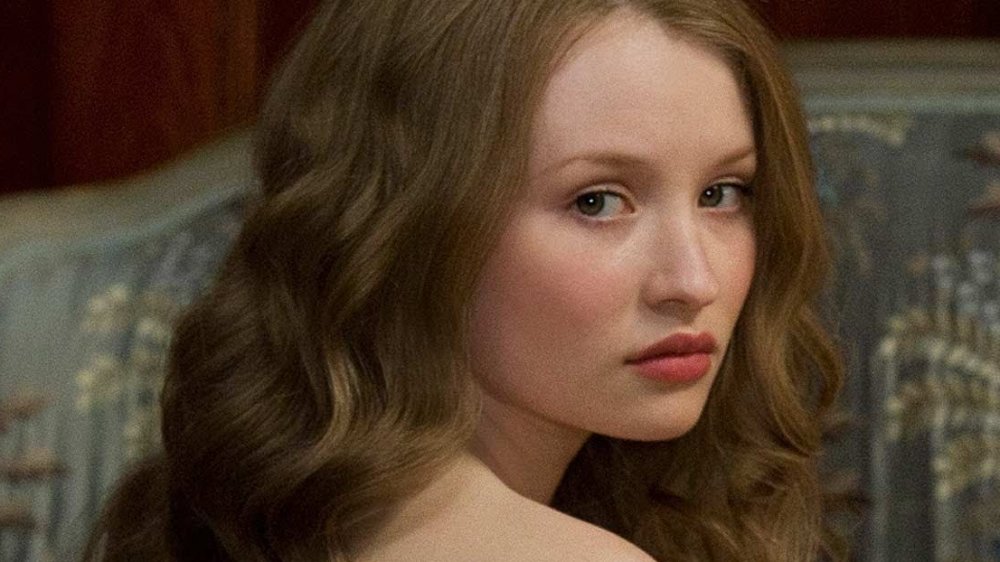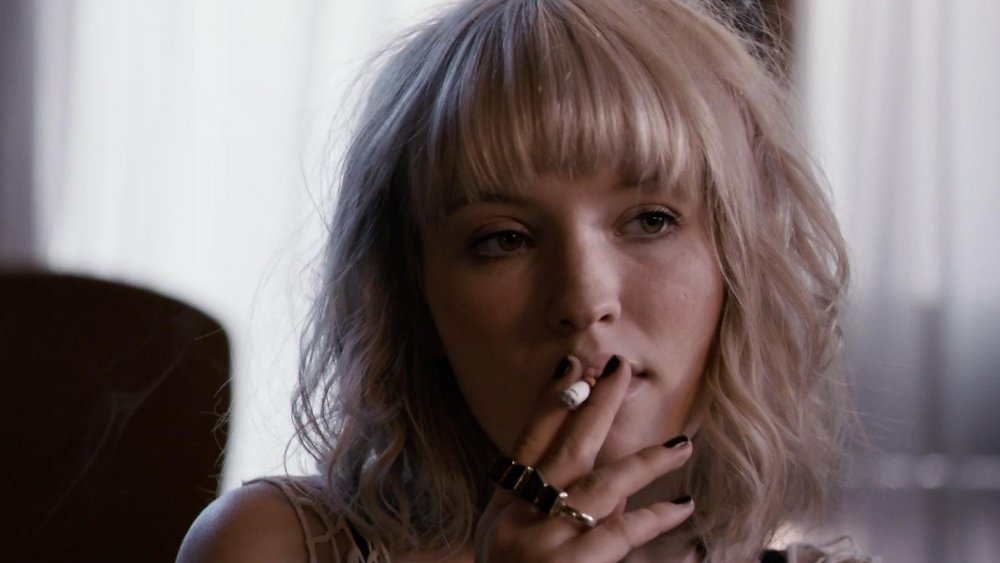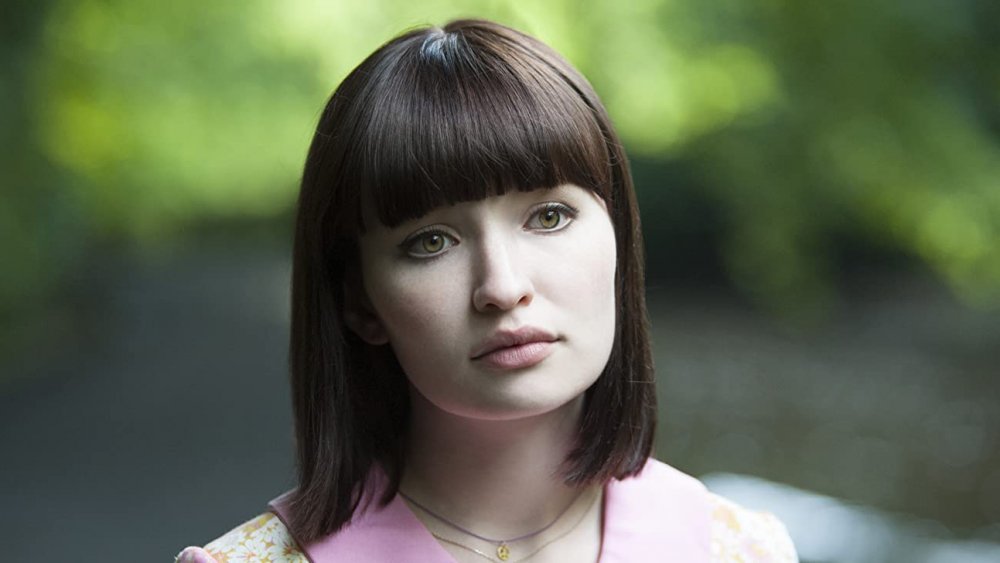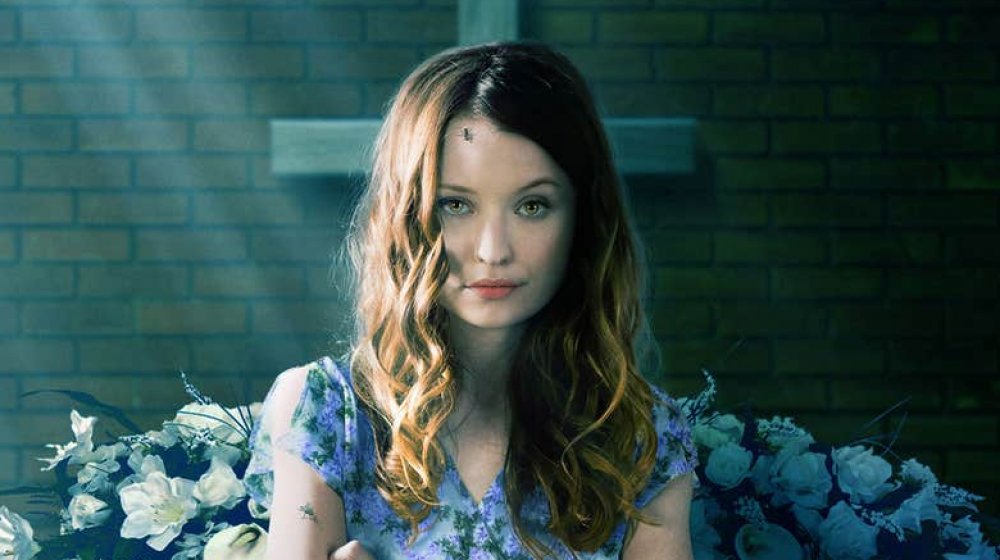This Is What Babydoll From Sucker Punch Looks Like Today
Sucker Punch was not well received when it released in 2011. It featured highly stylized comic book visuals full of slow-motion action, a unique blend of real-world and fantastical settings, and a subversive allegorical narrative about disempowered, wrongfully accused women imprisoned in an asylum and fighting through dreamlike vignettes of combat against foes such as robots and giant samurai in their inner worlds. Suffice it to say, many couldn't wrap their heads around it. It was even accused of being exploitative, rather than empowering, because the cast of female characters brandished swords and guns with the same aplomb with which they rocked skimpy clothing. It was easier to come to this conclusion when looking at the résumé of director Zack Snyder, who up to that point was best known for 2006's blade-and-flesh fest, 300.
The fierce leader of our group of women warriors, the lobotomized and abused Babydoll (Emily Browning), was not to be underestimated. Browning was the perfect choice for this role. She had recently broken into Hollywood with films such as Lemony Snicket's A Series of Unfortunate Events, and before that starred mostly in Australian TV series such as Blue Heelers and Something in the Air.
Since Sucker Punch, Browning has been keeping somewhat of a low profile. Even though she may not be at the center of superstardom, she's been quite busy with a select group of interesting, thoughtful projects. Let's take a closer look at what Emily Browning has been up to since Sucker Punch.
Emily Browning embraces Sleeping Beauty's spin on erotica
Since Sucker Punch, Emily Browning has largely opted for small, indie projects, starting with 2011's Sleeping Beauty, an Australian-made film about a very specific kind of brothel at which men pay to touch women who are sleeping. It's easy to see the story as a deconstruction of societal objectification of women, and even a satire about valuing women for their appearance rather than their talents. There are strong motifs of voyeurism throughout the film, and a desexualization of scenes that, in other movies, might be quite sexual. The connection between the film and Sucker Punch, in which Browning played another woman misunderstood for her appearance to the point of being objectified, is clear.
Sleeping Beauty was a huge challenge for Browning, who not only had to be fully nude on camera, but also had to allow intimate contact between herself and other actors. Browning said that her character, Lucy, was fascinating, and a complete contrast to her everyday self. "I thought her willingness and recklessness and nihilism and her strength was really cool," Browning says. "The fact that it made me uncomfortable was a plus for me." Browning also states that the decision allowed for tremendous personal growth.
It makes sense that Browning, who at the time had gained attention from the mass media and general public, might use this kind of film to question her career and image.
Magic Magic and Plush: For the thrill of it
After Sleeping Beauty, Browning starred in a couple of very different thrillers, Magic Magic and Plush, both released in 2013.
Browning takes on more of a secondary role in Magic Magic with her character Sara, who, along with her insomniac friend Alicia (Juno Temple), takes a road trip to Chile and gets caught in a head game of psychological horror with friend-of-a-friend Brink (Michael Cera, playing very much against type). In her own words from an interview with Red Carpet Diary, Sara is an unsupportive friend who doesn't take Alicia's concerns seriously, leading to her downfall.
Plush, by Twilight and Thirteen director Catherine Hardwicke, pushes Browning quite literally into the spotlight as she plays Hayley, the ultra-famous frontwoman of a rock band named Plush who is stalked by a zealous fan. The film is part noir, part thriller, and part horror, and gives Browning a chance to flex some acting chops as a brazen, bold character in a role that is a bit of a departure from her previous films.
Interestingly, both of these films feature characters who are selfish to the point of damaging their own lives and the relationships of those around them.
Emily Browning's period of romantic dramas
Browning's next major feature was Summer in February, based on a true story and set in the early 20th century. In it, she plays Florence Carter Wood, a woman caught in a love triangle with artist Alfred Munnings (Dominic Cooper) and his friend Gilbert Evans (Dan Stevens). This film is quite different from Browning's previous work, even a bit traditional, and is the first of a set of love-oriented films that set Browning on track to return to near-blockbuster films.
The second title in this period is God Help the Girl, which hearkens back to Browning's roots as a character in a psychiatric facility, but combines it with her experience playing a musician in Plush. In this film, Browning plays Eve, a secretly talented novice musician who inadvertently brings two other musicians together (James, played by Oily Alexander, and Cassie, played by Hannah Murray) to form a band. The movie is based on a musical by Stuart Murdoch of Belle & Sebastian, and as a fan, Browning says she wanted the role as soon as she saw the musician's name on the script. She also indicated in an interview with Arise Entertainment 360 that she drew on her own experience for Eve, because Eve is unable to feel settled or comfortable unless she finds a way to channel her creative energies.
Emily Browning veers towards big names and blockbusters
For her next project, Browning was in 2014's Pompeii as the character Cassia. The story is a fictionalized account of the ancient city of Pompeii as it was consumed by the eruption of Mt. Vesuvius in 79 AD. In interviews, Browning says that she always wanted to play a character like Cassia, but the role never came up (via MovieClips Coming Soon). As Browning describes her, Cassia is a smart, sharp, tough, and rebellious woman who represented a meaningful role for the actor. So, even though Pompei may seem like a disaster movie blockbuster on the surface, it represents another choice in a thoughtful, careful filmography for Browning.
After Pompeii, Browning starred alongside Tom Hardy in Legend, a crime thriller based on real-life events in which Hardy plays the dual role of twin brothers Reggie and Ron Kray. Browning plays Francis, spouse of Reggie Kray, and describes her character as attracted to Reggie Kray as a means to escape poverty, to the point where she is willing to turn a blind eye to her husband's criminal activities.
After these two more prominent roles, Browning turned back to small-budget, indie films Shangri-la Suite and Golden Exits. In Shangri-la Suite, she plays one half of a serial-killing couple bent on murdering Elvis Presley, and in Golden Exits, she provides an impressively textured performance in a layered family drama about relationships and desire set in Brooklyn.
Both of the characters in these films are attracted to hopeless situations that make them feel alive, nonetheless, and serve as the perfect segue for the next state of Browning's career.
Emily Browning's return to television
Browning's most recent role landed her in the acclaimed TV adaptation of Neil Gaiman's American Gods, in which she plays Laura Moon, wife of protagonist Shadow Moon. Laura is a complex character, one who Neil Gaiman cited as being difficult to crack. Browning's performance has been widely loved, though, even if her character is describable as cheating and selfish. It's a testament to Browning's evolving skill as an actor that she's able to elevate her role as Laura Moon to a level beyond that of the character in the novel, to the point at which her own journey is on par with that of Shadow, the main character.
This recent role has brought Browning back into the limelight, and it'll be interesting to see where she takes her career from here. Regardless, as a restless, relentlessly evolving actor, we can be sure that Browning will not be content to rest on her laurels.





